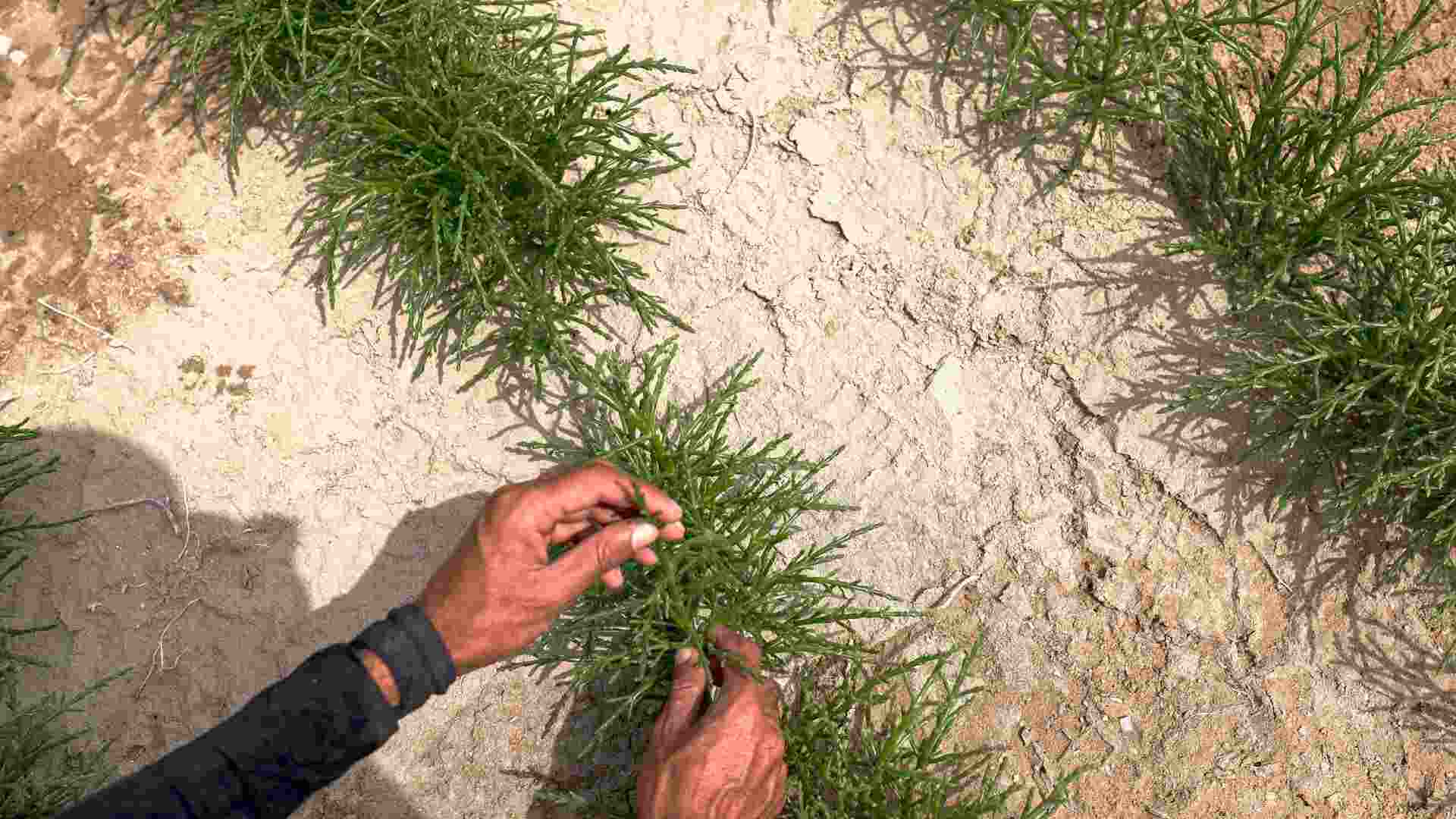- | 8:00 am
Saltwater is poisoning crops. The ‘sea asparagus’ could be the solution
The salicornia thrives in salt marshes and wetlands. New research shows how its survival secrets might be harnessed for food production in a changing climate.

Feeding the world’s 8 billion people requires huge amounts of water. Globally, about 70% of the freshwater we pull from rivers, lakes, and streams goes toward agriculture. But that essential resource is under threat: Saltwater is saturating the soil, poisoning crops, and ruining farmland.
Perhaps unsurprisingly, climate change is the main culprit here. Melting ice sheets are purging huge amounts of water into the oceans, causing sea levels to rise and inundate coastlines. Extreme droughts and storm surges from stronger hurricanes also allow sea water to creep inland. By one estimate, salt threatens 30% of the world’s arable land.
To overcome what has been called “the greatest challenge for the short-term future in agriculture,” researchers are looking for new ways to farm in an increasingly saline world, and they’re taking inspiration from plants that already thrive in salty conditions. A recent study published in the journal Nature Communications focuses specifically on a plant called the salicornia. Nicknamed the “sea asparagus,” salicornia is an edible succulent that is already eaten all over the world, with a flavor that’s described as “crisp, juicy, and salty.” Samphire, which is most often served with fish, is a kind of salicornia. Most importantly, these plants grow in salt marshes and wetlands. “They are amongst the most salt tolerant of all plant species,” the authors wrote, “and can thrive in environments with salinities even higher than seawater.”

To learn more about salicornia’s survival secrets, the researchers sequenced the genomes of two species and found that the plant is able to store sodium in “compartments within cells” that prevent it from poisoning the rest of the cell. Understanding this process could yield the crops of the future. “We can use this information to breed crops that can be cultivated with saline groundwater or even seawater,” said Vanessa Melino, a plant physiologist and molecular biologist at the University of Newcastle, and an author on the study.

That’s exciting, but will take a lot more research. In the meantime, Melino thinks salicornia could be utilized in sustainable food production. For example, the plant’s seeds could be used to make a nutritious, high-protein oil to rival olive oil, or serve as an alternative source of protein. “By focusing on fats and protein, we are trying to develop products that can be transported easily and are more sustainable than other sources—using seawater for irrigation instead of relying on limited freshwater resources,” Melino said.

Salicornia is a wild plant, so it would need to be domesticated, and that process can be painstakingly slow. Many of the crops we eat today were domesticated over tens of thousands of years, as earlier humans selected and sowed seeds from the plants that proved the most robust. Scientists like Melino can speed this process up significantly using gene editing. So “taming” a wild plant might take tens of years instead of thousands of years. “Our goal is to turn this wild plant into a profitable oilseed crop for farmers,” she said. “We are using tools and techniques to do that as quickly as possible.”
Salicornia isn’t the first candidate crop for saline agriculture. Breakthroughs have already been made in developing salt-tolerant tomatoes, potatoes, and carrots, among others—though few have yet been made available for commercial use. And some crops, including sunflower, sugar beets, and barley, naturally tolerate salt. So there’s lots of hope for the future of farming.
Seawater intrusion threatens far more than crops, though. It can make fresh water undrinkable, destroy infrastructure like roads and pipelines, and decimate ecosystems. So while this research is both fascinating and promising, the underlying problem of saltwater creeping further inland is one that demands many more solutions.






































